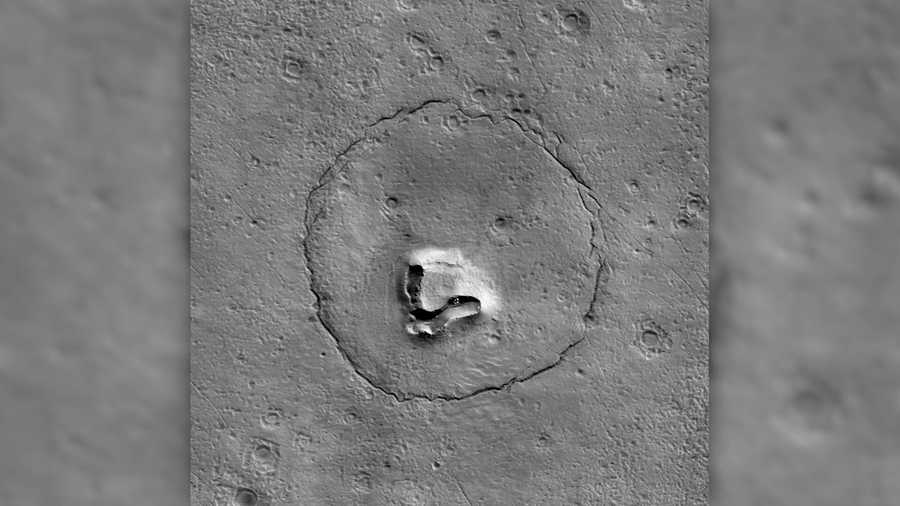NASA orbiter captures image of a bear's face on Mars
As a NASA orbiter turned its camera to the Martian surface, the face of a bear seemed to be looking back.
A camera aboard the Mars Reconnaissance Orbiter, called the High Resolution Imaging Experiment, or HiRISE, captured an image of the unusual geological feature in December.
A circular fracture pattern on the Martian surface shapes the head, while two craters resemble eyes. A V-shaped collapse structure creates the illusion of the nose of a bear.
The circular fracture might be due to the settling of a deposit on top of a buried impact crater that had been filled in with lava or mud. The noselike feature is possibly a volcanic vent or a mud vent.
The University of Arizona, which developed the camera with Ball Aerospace, shared the image on Jan. 25.
The photo is reminiscent of another celestial "face" glimpsed by a NASA space observatory in October 2022, when the sun appeared to smile due to dark spots called coronal holes.
And last March, the Curiosity rover spotted a rock formation that resembled a flower on Mars.
The HiRISE camera has been taking images of Mars since 2006, when the Mars Reconnaissance Orbiter began circling the red planet. The powerful camera was designed to capture detailed images of the Martian surface, including features as small as 3 feet (1 meter).
The orbiter circles Mars every 112 minutes, flying from about 160 miles above the south pole to 200 miles over the north pole.
The spacecraft and its suite of instruments help NASA scientists study the Martian atmosphere, weather and climate, and how they change over time. The orbiter searches for evidence of water, ice and complex terrain and scouts future landing sites for other missions.
Most recently, the orbiter returned stunning images of what winter looks like on Mars.



